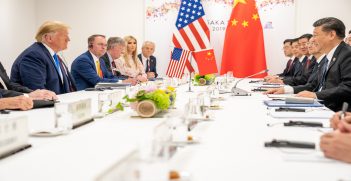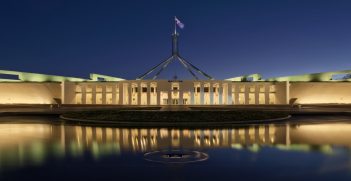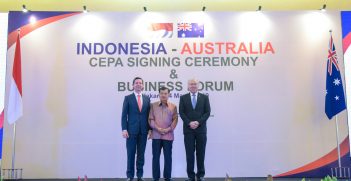Building Economic Bridges: Australia, India, and Critical Minerals

Before the economic dislocation caused by COVID-19 spread beyond China, Australia’s overreliance on a select few commodity exports to this one market was laid bare. It is essential for post-pandemic recovery efforts to focus on diversifying Australia’s trade relationships.
On this, significant effort has been made in recent years to strengthen the Australia-India economic relationship by government, industry, and academia in both countries. Undertakings have included the Australian government’s implementation of a comprehensive India Economic Strategy, with an equivalent Australia Economic Strategy due for release by the Indian central government. For Australia, India is a strategic as well as economic pursuit. Strategically, a closer relationship will build stronger political ties with a country that shares many of Australia’s international objectives, such as a rules-based regional order. Growing its economic relationship with one of world’s major emerging economies will also contribute to the diversification of Australia’s trading and industrial base.
Transforming Australia’s economic relationship with India will be a challenging task. For example, India’s endowments of iron ore mean this commodity will not be a foundation for bilateral ties, like it has been for China, Japan, and Korea. To succeed with India, Australia’s task includes expanding the services relationship and developing a resources relationship that goes beyond raw materials exports. The critical materials sector provides an ideal opportunity.
The term “critical material” is assigned to up to thirty raw minerals including cobalt, lithium, and nickel, which are essential inputs for 21st century technologies. These minerals are used to construct smartphones, renewable energy infrastructure, life-saving health equipment, and electric vehicles. Unlike bulk commodities such as iron ore, the supply-side risks facing consumers of critical materials are significant. Monopolised production, narrow markets, and social challenges mean the supply of critical materials is neither secure nor always affordable.
For producers, there are also major barriers to entry. Companies that produce critical materials face significant funding and price volatility risks, while governments’ industrial and procurement policies are challenged by the geopolitical and sustainability risks in existing critical materials supply chains. Given resource endowments and manufacturing capacity limits, no single country can supply all of the critical materials it needs to function in the 21st century.
Here, Australia has a major role to play. Australia has significant natural endowments in many critical materials, and it has the capacity to contribute to the processing and manufacturing stages of value chains. However, international trade and investment relationships are needed to underpin activity by Australian companies in what is inherently a globalised sector.
Enter India. India is determined to increase the contribution of its manufacturing sector to its economy, and central government industrial policy seeks to ensure India becomes a major producer of critical materials-utilising technologies. Driven in large part to meet its electric vehicle and emissions reduction targets, India has identified lithium, cobalt, nickel, and rare earth metals as key to its future industrial plans. Australia is richly endowed with all four.
While the majority of Australia’s trade with India has been in the export of raw minerals commodities such as metallurgical coal and gold, a new focus on critical materials crystallised in 2019. In developing India’s Australia Economic Strategy, author Ambassador Anil Wadhwa made repeat public visits to Australia concerning critical materials. Subsequently, a late-2019 overview of the upcoming strategy noted it was imperative for India to focus on Australia to meet its demands for critical materials.
At the commercial level, the establishment of an Indian state-owned joint venture company to acquire critical materials also undertook delegations to Australia. Significantly, the first Australia-India lithium agreement was signed in 2019. If the project develops, it will be the first lithium refinery in India and it will be fed with Australian product.
With the evolution of COVID-19 into a global pandemic, the task of building the Australia-India economic relationship is likely on hold, as are the prospects for near-term commercial developments in the critical materials sector. India’s 24 March lockdown of 1.3 billion people has brought factory production across many sectors to a temporary standstill, including the car industry. Furthermore, many of Australia’s critical materials companies have temporarily closed their mining operations and processing plants.
While the COVID-19 pandemic is still spreading, there are some positive signs. The response by India’s central and state governments in enforcing swift social distancing measures may prevent longer term economic dislocation, with The Economist forecasting India will avoid a recession. In Australia, economic recovery planning is beginning. The supply-shock created by COVID-19 will eventually increase global demand for essential products and services, and this will include the sourcing of critical materials by India’s companies and its governments.
In due course, it is imperative Australia engages India to advance this critical materials supply and processing partnership. Becoming a trusted supplying, processing, and production partner with India is one outcome that will support Australia’s post-COVID-19 economic recovery, and advance its economic diversification agenda.
Hugo Seymour is a research analyst at the Perth USAsia Centre.
This article is published under a Creative Commons Licence and may be republished with attribution.





